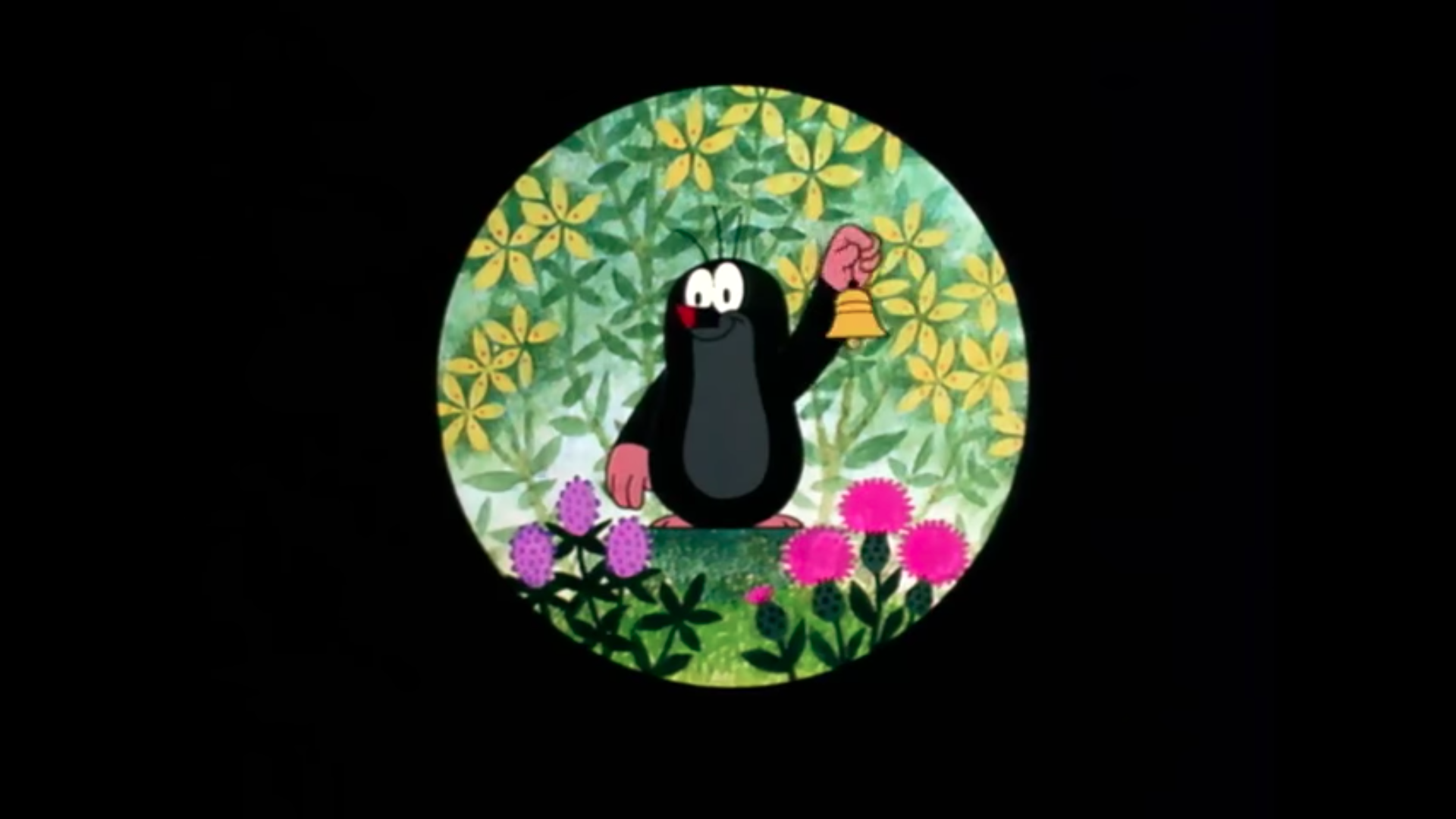Daniel Mason, Marta Figlerowicz, and Malachi Black Recommend

From Zdeněk Miler’s “Krtek a maminka.”
Guild loyalty says I should probably choose a work of fiction for my favorite recent book, but I’m not sure that anyone, with the exception of Octavia Butler, could serve up as glorious a museum of the unimaginable as Charley Eiseman and Noah Charney do in Tracks & Sign of Insects and Other Invertebrates: A Guide to North American Species. Have you ever seen a spongilla fly cocoon (silk lozenge haloed in a lacy mesh of bridal finery)? How about neatly-ranged eggs laid by a katydid along a blade of grass? I had thought myself well-versed in the range of parasitic terrors until I saw the work of a mummy wasp upon a sphinx moth caterpillar. And leaf miners! When my mortal hour is up, I will look back and see my life divided into the half when I hadn’t known labyrinths like the ones they make existed, and the one after I came to understand that they are everywhere.
I came to this book when no amount of googling could solve the mystery of who had made the particularly stylized set of tunnels I kept finding on downed poplar in the woods, carved in a pattern I can best describe as a cross between fine hatchet marks, the grooves on a music-box cylinder, morse code, alien messages, and the exuberant scribblings of a child who has discovered the letter i but has only a single sheet of paper. “Dotted insect lines on poplar logs,” “wood beetle straight lines dots poplar,” “straight lines wood downed tree”—try them, they will lead you nowhere. Except they did lead me to Eiseman and Charney’s book. Oh, the pleasure of realizing that something bound can deliver what the internet cannot! Tracks & Sign had a gallery of insect carpentry to choose from. While they didn’t highlight the poplar chiseler I was looking for (I would later learn it was a shipworm—one of those wonderful instances when natural history suggests a deep human history as well), by then it didn’t matter. A great nature e-book both orders the world and leaves one with the sense of a vastness far beyond one’s self. This one does both …
—Daniel Mason, author of “A Case Study”
Shortly after World War II, Czechoslovakia became a leading producer and exporter of LSD. In the sixties, the CIA accused the Czechoslovak government of smuggling LSD to America to corrupt its flower youth. The CIA’s own experiments with both acid and infiltrating American communities with illegal drugs are now well-known. But Czechoslovakia’s government, and their scientists, didn’t see acid as a weapon: they advocated for the drug’s therapeutic—and, notably, aesthetic—benefits. Between the mid-fifties and the late seventies, governmental agencies openly and freely distributed LSD to Czechoslovakia’s creative communities, believing that tripping on acid would lead to better, bolder art.
I cannot prove that groundbreaking early Czech animators like Zdeněk Smetana, Jiří Trnka, and Zdeněk Miler benefited from these policies, but I prefer to believe they did. Their short animations have a trippy, dreamlike quality that makes them enjoyable for adults even though most were originally made for children. My kids watch them on YouTube with a combination of confusion and recognition: these early animations have inspired many latter-day artists across the world, including the creators of Steven Universe.
If you’re looking to introduce yourself or your loved ones to golden-age Czech animation, Miler’s Krtek is the obvious place to start. First shown at the Venice Film Festival in 1957, these cartoons about a little mole are permanently burned into the collective unconscious of my generation of Eastern Europeans. Voiced by Miler’s daughters, Krtek yelps and coos at the world like a toddler but navigates his environments with surprising competence. In an episode entitled “Krtek a maminka” (The little mole and the mother), Krtek delivers a rabbit’s three babies after officiating her marriage to a besotted fellow bunny. Miler depicts the logistics of birth-giving with a matter-of-factness that scandalized my twelve-year-old. “Is that the rabbit’s vagina opening?” Oh yes, it is.
—Marta Figlerowicz, Olga Tokarczuk’s interviewer for The Art of Fiction No. 258
When rummaging through the vast thrift store of history, one’s hand sometimes lands on the sublime. One of my more sustaining finds has been Plotinus, the third-century Roman Egyptian philosopher whose Enneads now lie mostly dormant in the library stacks. He writes: “the Kosmos moves, seeking everything … this very motion is its eternal attainment … the Soul is ceaselessly leading the Kosmos towards itself.”
—Malachi Black, author of “Holding a Book I Haven’t Read in Many Years”
Copyright
© The Paris Review
